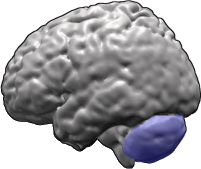WEDNESDAY, 19 OCTOBER 2011
The cerebellum is ideal to synthesise due to its relatively basic neuronal make-up, and because much is already known about its functions. The team began by analysing signals sent from the brainstem to a real cerebellum. They then created a chip to carry out the same role as the cerebellum and placed the chip on top of a rat’s skull, connected to the brain via electrodes. The system was tested on an anesthetised, brain-damaged rat whose own cerebellum had been disabled. The researchers taught the rat to blink by playing an auditory tone, whilst blowing air on to the animal’s eye. Eventually, the rat blinked just upon hearing the tone. The animal could only behave this way, however, when connected to the robotic cerebellum.The next stage will be to create chips for larger areas of the cerebellum, and implant them into a conscious animal, allowing conditioning of a wider variety of movements. However, the team face many challenges, such as increasing the quality of signal produced by the artificial cerebellum.
The work, which was presented at the “Strategies for Engineered Negligible Senescence” meeting in Cambridge, is a significant development in the hunt for treatments for stroke patients and those with neurodegenerative diseases; this sort of implant could potentially be used to replace damaged parts of the brain. It could even be used to improve healthy brain function and to help prevent cognitive decline with age.
Written by Mrinalini Dey
http://www.aftau.org/site/News2?page=NewsArticle&id=15347

